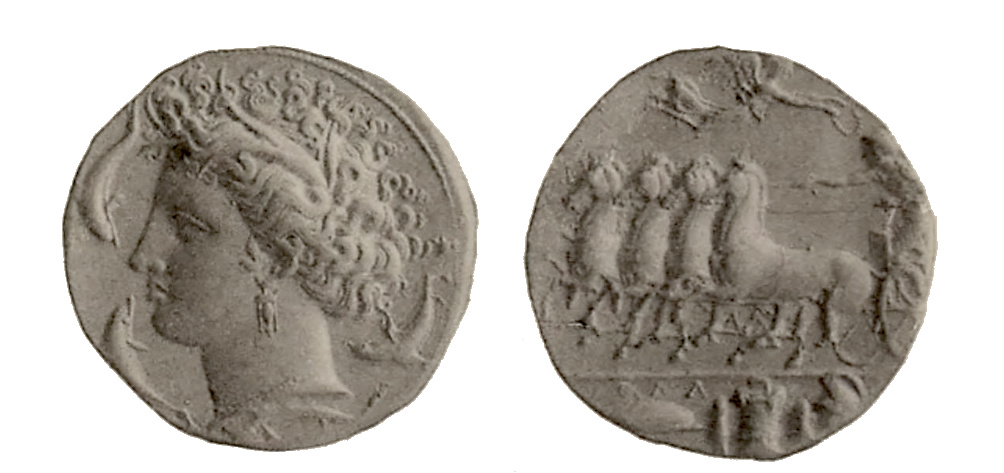Addington, Samuel (1806-1886)
by John Voukelatos
Samuel Addington (1806-1886) was a woollen merchant living in St Martins Lane in London. He was member of the Arts Club and Burlington Arts Club and collected porcelain, old master prints, paintings, and modern watercolours in addition to modern and ancient coins. He was a juror at both the Great Exhibition in Hyde Park in 1851 and the Paris Exposition Universelle in 1855.
Edward Burns, the 19th century Scottish student of numismatics, referred to him as the Leviathan, as he would often purchase coins at incredibly high prices. William Carew Hazlitt described Addington in an article as a tall imposing figure, with an inclination at the last to stoop. The author describes him as a most extraordinary person, illiterate, but also a man of the keenest and truest instinct for what was worth having. A bachelor, he lived above his shop in St Martins Lane, with an income of £15,000 a year. He set the precedent of giving prices for articles beyond record and example.

Cales. Didrachm. From the collection of J. Lewin Sheppard, Frederick Sargent Esq., S.Leigh Sotheby & John Wilkinson, 1861; purchased by S. Addington; Earl of Ashburnham SWH 1895; purchased by Rollin; de Guermantes Collection and those of R. de Castro Maya, Bourgey 1957; Leu Numismatics 2003. Image: Ex Leu Numismatics 86 (2003), lot 196.
Although Addington is known for a collection of British coins that was purchased en bloc by Sir Hyman Montagu in 1883, and a further collection of French, German and English medals offered for auction by Sotheby, Wilkinson and Hodge in 1886, his Greek coin collection is less well known and or described. Addington acquired many rare and valuable Greek coins from notable 19th century collections including those of Lord Northwick, Octavius Borrell Esq., Baron C. G. Huber, C. L. Merlin, Jules Sambon and the Prince of San-Giorgio, Domenico Spinelli. Many of these coins can be traced to the 1895 Sotheby, Wilkinson and Hodge auction of the 4th Earl of Ashburnham. The front cover of the catalogue describes the coins as: “Τhe property of the Earl of Ashburnham: from the Thomas Thomas, Northwick, Addington and Wigan collections and other sources.” Whereas some of the catalogued coins have a prior provenance including that of the Thomas Thomas Esq. and Lord Northwick Collections detailed, the name Addington (Samuel) does not appear elsewhere in the catalogue. In fact, many of the coins in this sale can be traced to Samuel Addington.

Magnesia ad Maeandrum. Drachm. From the collection of Baron C. G. Huber of Vienna Collection SWH 1862; Purchased by S. Addington; Earl of Ashburnham SWH 1895; purchased by Spink; John Ward Collection, Sotheby & Co. 1973; Abecassis Collection, Leu Numismatics 2001. Image: Ex Leu Numismatics 81 (2001), lot 275.
In 1922 the British Museum acquired a rare silver Syracusan Dekadrachm (1922,1109.1) through donation. The coin was once in the collection of Thompson-Yates and before that the 5th Earl of Ashburnham. The rare coin has been published and features in many illustrious numismatic periodicals and books.
The rare variety features the letters ΑΘΛΑ above a shield in the exergue of the reverse. Sotheby, Wilkinson and Hodge offered this coin for auction in 1895 as part of the collection of the Earl of Ashburnham, page 10, Lot 53, Pl. II. Claude Camille Rollin (coin dealer) purchased the coin for 91 pounds and by 1903 the coin was in the collection of Thompson-Yates.
In 1870, the same auction firm had offered the ancient Greek and Roman coin collection of the Neapolitan collector and dealer Jules Sambon (this catalogue had no plates). The same coin had been offered for auction on page 21, Lot 225. An annotated catalogue has the name of the buyer: Addington (Samuel Addington).
Samuel Addington name also appears on the front page of the 1895 catalogue as one of the sources of the coins for the Earl of Ashburnham collection. The rarity of this coin; the only other one known to Arthur Gallatin in 1930 when he wrote Syracusan Dekadrachms of the Euainetos Type was the one found in 1891 at Santa Maria di Licodia in Sicily (Paris, Robert Jameson Collection 835), would point to the British Museum coin being the one once offered for sale in 1870 from the Jules Sambon Collection. With the help of the annotated 1870 catalogue, we can now trace the owners of this coin from Jules Sambon, Claude Camille Rollin, Samuel Addington, the 5th Earl of Ashburnham, and Thompson-Yates before it entered the British Museum collection. Hitherto the earliest known provenance was the 1895 auction.
We would like to thank John Voukelatos for kindly contributing this article.








